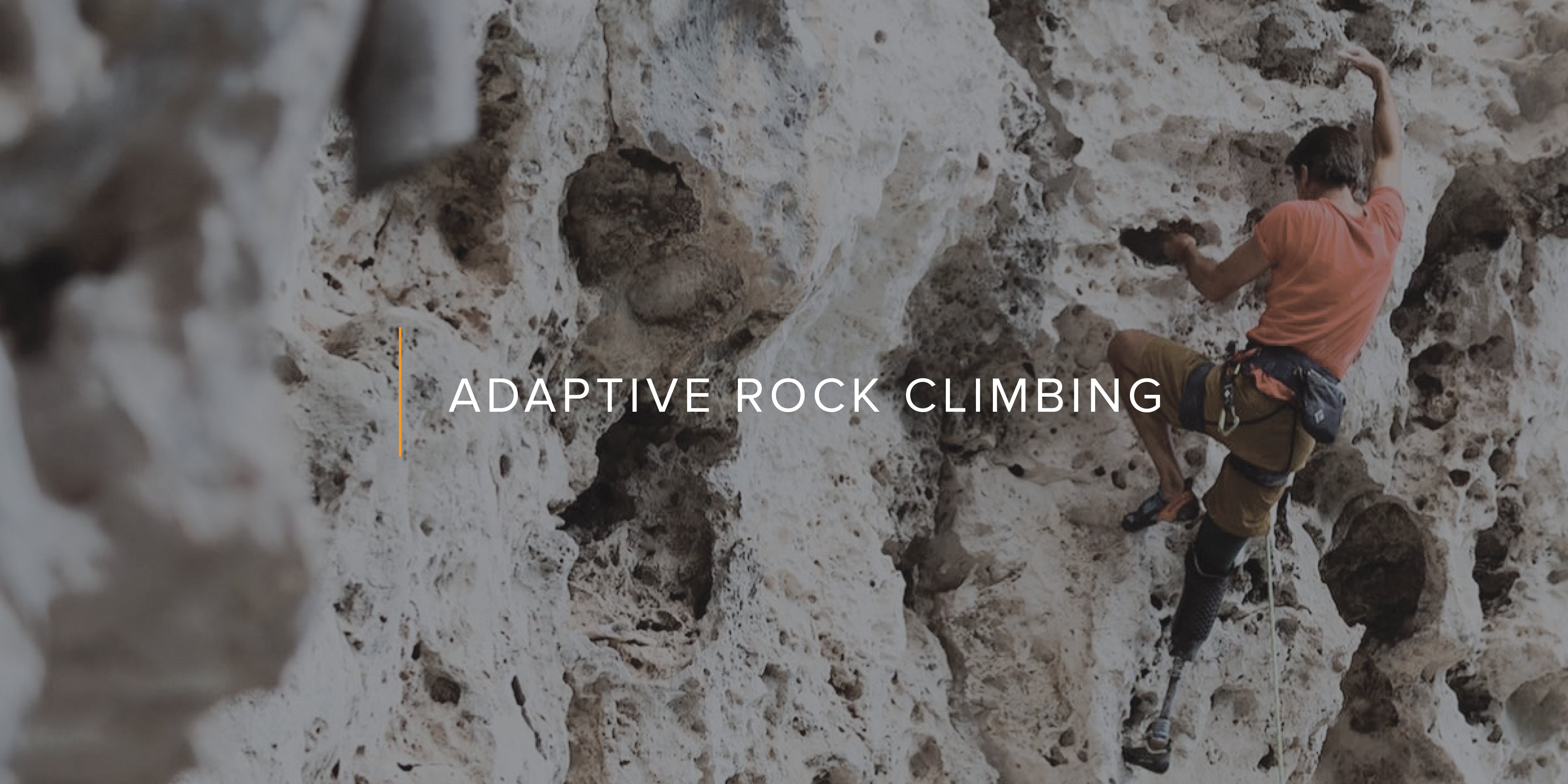Adaptive Rock Climbing
Climbing with Nicco in Puerto Rico
Nicco is working his way up a 40-foot limestone cliff.
We’re in the jungle of Puerto Rico and I am his climbing coach calling out to him from the ground below.
“If you don’t tuck your hips in as close to the rock as you can, your foot won’t stay put and you’ll get frustrated,” I say.
Just then, his foot pops off the small hold and the climbing rope snaps tight.
“Too late, I’m frustrated,” Nicco responds.
I lower him to the ground and let him catch his breath.
We then talk about the climb, what went well and what didn’t.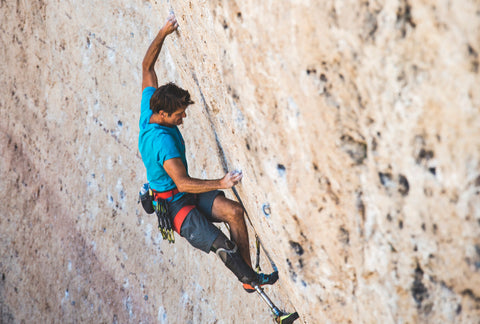
Adaptive Climbing
I teach climbing to a wide variety of people who all have one thing in common: They are disabled.
Just like Nicco.
My clients range from former military personnel with PTSD, to amputees, the blind, people with paralysis, or those confined to a wheelchair. Whoever it is, I strongly believe that climbing with adaptive equipment can be therapeutic.
To date, I have taught adaptive climbing clinics all over the lower 48 states, Canada, and Puerto Rico for a non-profit called Adaptive Adventures.
My Climbing Journey
I immediately fell in love with climbing right out of high school in 1988.
I decided I would do whatever it took to become skilled in every facet of climbing.
For the next decade, that’s exactly what I did. You could say I was a climbing junkie.
Flash forward to 2001, while climbing in Colorado’s Rocky Mountain National Park with a friend—because of an innocent miscommunication—I was accidentally dropped 100 feet to the ground.
My fall took me through a large tree that (thankfully) flipped my body around so that I somehow landed on my feet. I was awake for the whole thing.
As my friend ran to my aid, we quickly discovered I had many broken bones from my head to my feet. I broke my back at the L1-4 vertebrae, my neck at the C5 & C6 vertebrae, and mangled my right leg.
The doctors fused together my vertebrae in both my neck and spine, but I chose to have my right leg amputated just below the knee.
Why amputation? The simple answer is quality of life.
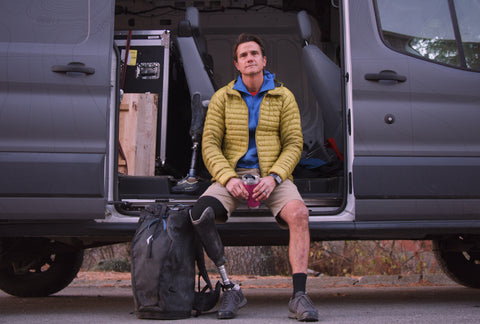
Life Changed
That day in Rocky Mountain National Park permanently changed my perspective on life.
When you are severely injured, you feel very alone. You feel like no one else is going through what you’ve been through.
Even with a loving, devoted wife at my side every day, I still felt alone and depressed.
At best, I would be a shell of what I was before.
But it was meeting other injured athletes, fighting hard to return to their sports, that gave me hope. They may not have been climbers, but I gained credibility with them because we were all on the same road to recovery.
The road back to the rock face was not easy. But after five years of hard work, I’ve been super fortunate to have completed some fun, personal challenges.
I even made it back to a professional climbing level.
Here are a handful of accomplishments:
- First Amputee to Climb Yosemite’s El Capitan in a Day.
- Lead the First All Disabled Ascent of El Capitan.
- Two Time National Adaptive Climbing Champion.
- Two Time Bronze Medal Winner in Adaptive Worlds.
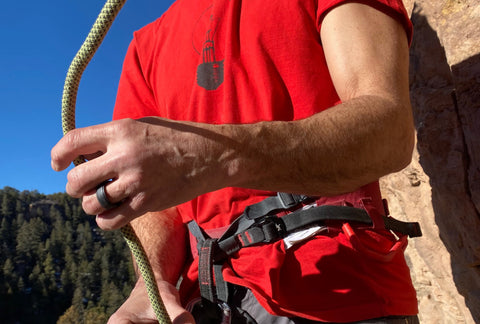
Meet the Vets
It was after a trip to Yosemite when a friend invited me to help him teach a few disabled veterans how to climb.
I found that I had many things to share with these vets. Guidance about how to cope with our injuries, how to deal with the pain and suffering.
We eventually got around to talking about what it means to thrive with your new body, about seeking something better than what society expects from us.
We were determined to not let our injuries define us.
We would move forward with confidence and strength.
Did it take away the chronic pain, fatigue, and baggage that comes with a lifelong injury? No.
Did it help frame living in a healthy way? Yes. Every time.
Back to Nicco
Today, it’s Nicco’s turn. And he’s ready to get back in his harness.
He carefully makes his way back up to his highpoint and sets his foot.
Just like I coached him, he draws his hips close to the rock, weights the foot, and drives up to reach the next hold. Perfect.
His prosthetic foot sticks on the hold–the same hold he fell from before—and he moves another 10 feet.
As he makes his next move, his foot slips from being tired and he falls. But he’s happy.
He successfully solved one specific problem out of a million. Forward momentum was gained, that’s what matters.
That’s adaptive climbing. 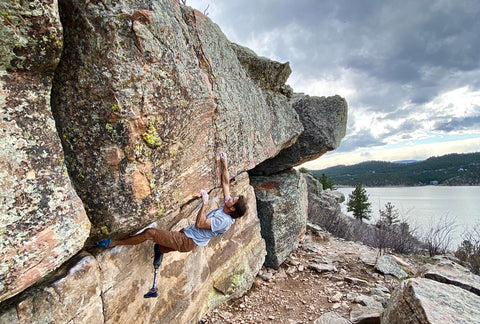
The Happy Climber
The injuries I deal with are lifelong, but so are the relationships I’ve built in the climbing world.
That we are all a family is true. That we are all sorting through our own trauma of some kind is also true.
I’ve found that by dealing with mine, and being happy with who I am whether it fits the norm, is the healthiest thing I can do for myself and for other people.
To be a human that is happy and pursuing what truly makes me happy is a gift and not one I take lightly.
For me, to follow that, I feel is the best gift I can ever give or receive.
Groove Life®. Ready for Adventure™.
FOLLOW CRAIG DEMARTINO:
INSTAGRAM: @craigdem
FACEBOOK: Craig DeMartino
TWITTER: @demartinoclimb
